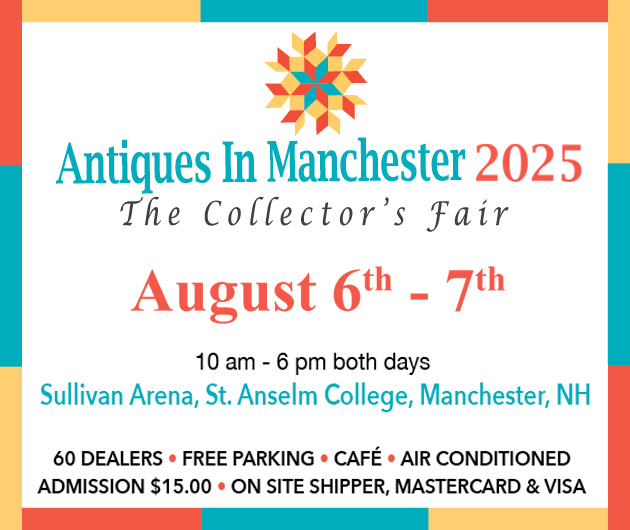Rittenhouse Tall Clock and Jonas Weber Box Sell at Conestoga
June 13th, 2015
|
This paint-decorated small trinket box by Jonas Weber, often called Jacob Weber, 1820-40, 2 3/8" x 4 1/8", is painted green and decorated with a red house and yellow trees on the front, tulips on the sides, and a flower and corner fans on the top. It sold on the phone for $18,880. Jeff DeHart said he was on the phone with a second-generation New Jersey collector. Inside the box were two handwritten cards saying that the box had been purchased at the Sara B. Musselman sale held by Horst Auctioneers at the Farmersville Fire Hall on October 8, 1983, for $900 (no buyer’s premium). The last small Weber box of this size at auction sold in April at Anne and Jeff Miller’s sale at Pook & Pook for $11,400. It had yellow trees and a flower on the front and tulips on the sides and top but no house.
|
|
This rare brass and wrought-iron pie crimper made by John Derr, Oley Valley, Berks County, Pennsylvania, 1800-50, the wheel impressed four times “JOHN DERR,” 8¼" long, sold for $2006.
This Lehnware paint-decorated wooden water bucket by Joseph Lehn (1798-1892), Elizabeth Township, Lancaster County, has grain-painted vertical staves with iron band supports painted with pussy willows and a wire bail swing handle with turned wooden grip. It is 8½" high x 10¾" diameter and in good condition with very minor losses. It sold in the salesroom for $4425 to David Horst, who said he was bidding at the sale for a number of people and for stock. |
Conestoga Auction Company, Manheim, Pennsylvania
Photos courtesy Conestoga
At the June 12 and 13 catalog sale at Conestoga Auction Company, Manheim, Pennsylvania, a circa 1765 eight-day clock with a brass dial engraved “Dav. Rittenhouse, Norriton” (now Norristown near Philadelphia), in a walnut tall case, 7'1" high, sold for $18,880 (with buyer’s premium) to a Maryland collector in the salesroom, underbid on the phone. Earlier in the sale a New Jersey collector bidding by phone paid the very same price for a 2 3/8" x 4 1/8" trinket box attributed to Jonas Weber, who used to be known as Jacob Weber, Leacock Township, Lancaster County, Pennsylvania. The 1820-40 green-painted box is decorated with a red house and yellow trees on the front and tulips on the sides and a flower and corner fans on the top. A card inside read “Sara B Musselman $900 Oct 8 83 Farmersville Fire Hall, Horst Auctioneers.”
According to an article in the February 1989 issue of M.A.D., p. 14-E, on December 15, 1988, Alderfer Auction, Hatfield, Pennsylvania, sold a David Rittenhouse 30-hour clock in a chestnut case for $20,500 to Rittenhouse descendant Norman Rittenhouse, a businessman from Harleysville, Pennsylvania, who wanted to own one of his ancestor’s clocks. The clock was made for John Coulston in 1752; Coulston was an uncle of David Rittenhouse’s first wife.
In the same article, Willard McKay, then in charge of catalog sales at Alderfer, is quoted as saying that Philip Bradley had recently sold a similar clock in a nicer case for $14,000 and that he had bought it at Christie’s for $9900, which he said indicated that there is an advantage to selling locally. The clock at Conestoga has a more desirable eight-day movement and is also probably missing its original feet and sarcophagus top.
Thirty-hour clocks can be hard to sell these days, but the price shows that the value of clocks is probably back to the level of 25 years ago. The highest prices paid for Rittenhouse clocks are for those made after Rittenhouse moved to Philadelphia when his customers wanted clocks with complicated movements in rococo cases.
The market speaks at auctions, and sometimes it is hard to understand. Prices depend on who wants what, when, and how many want it. A trinket box’s value increased by nearly 20 times in a quarter century, while a clock’s value stayed about the same.
In the last year more collections put together for 30, 40, 50, and 60 years have been coming to market at regional auction houses. Collectors and the trade watch these sales closely, online and in person. When collectors want to fill gaps in their collections they pay strong prices for what they need but generally less than they might have paid before the economic downturn that began in 2008 and still lingers in the antiques market. Dealers are buying at reasonable levels, stocking up for shows where they can pass on their savings to buyers, making the middle market healthier. The thin market at the very top always has been driven by the very rich and remains high, but the middle market that used to be broad and deep, and in recent years moribund, is showing some signs of recovery with more activity.
“There are a lot of good ceramics at this sale,” said dealer David Horst of Lebanon, Pennsylvania, who took a seat on the last row next to his well-behaved young son. Horst did a lot of bidding and a lot of buying. He said he was buying for clients, for stock, and for other dealers. He bought multiple lots of spatterware, mochaware, and Gaudy Dutch, but the highest-priced, rarest ceramics went to the Internet, the phones, and to three collectors who were actively bidding in the salesroom. A mocha pitcher, 6¾" high, with bold colors and trailing cat’s-eye decoration sold on the Internet for $2006. A yellow spatter cockscomb pattern cup and saucer, with red flowers and green leaves, in very good condition, sold on the Internet for $944, and the same price was paid on the Internet for a rare Gaudy Dutch plate, 8 3/8" diameter, in the zinnia pattern. A Gaudy Dutch strawflower pattern plate, 8¼" diameter, sold to a collector in the room for $1121, and $885 was paid by a phone bidder for a 15" high unsigned two-gallon cobalt blue-decorated stoneware pottery chicken waterer. An incised and blue slip-decorated small stoneware pitcher, 5½" high, attributed to Richard C. Remmey, Philadelphia, incised “Clara Haentze 1894,” sold for a respectable $6195. It was probably made to commemorate Clara’s birth or christening. According to the catalog, Clara Haentze was born in 1894.
Bidders were willing to pay for anything signed and dated or having to do with local history. For example, fraktur artist Barbara Ebersol’s rocking chair and crutch sold on the Internet for $2596. Ebersol was a dwarf and had small-size furniture. Earlier in the sale an Internet buyer, possibly the same buyer of the chair, paid $5900 for a fraktur by Barbara Ebersol. It is 11" x 14½" and has a figure of George Washington on horseback, a hex sign, birds, and a vase of tulips and has the names Anna Stolzfusz and Barbara Ebersol and the date 1864. Barbara Ebersol was 18 years old when she made it for her friend Anna Stolzfusz. It and the rocking chair are pictured in the book Two Amish Folk Artists: The Story of Henry Lapp and Barbara Ebersol, and the fraktur is also pictured in Decorative Arts of the Amish of Lancaster County by Daniel and Kathryn McCauley. The two books sold with the fraktur.
An oval butter print, dated 1842, with the initials “J.H.” on the back sold on the Internet for $5605. A rare brass and wrought-iron pie crimper, impressed four times “JOHN DERR,” sold for $2006, and a brass and iron dough scraper, stamped “B.L.S.” for Benjamin L. Sebastian, Berks County, sold for $1180. An early stove plate from the Martic
furnace in Lancaster County, dated 1761, sold for $826. It is pictured in Henry Mercer’s The Bible in Iron. David Horst bought for $4425 a Lehnware wooden water bucket in very good condition that was not signed.
 The sale total for 908 of the 917 lots offered came to $362,212 and included a broad range of prices for a huge variety of items including $5.90 for a Hummel figurine dealers plaque; $413 for an 11" long Buddy “L” flivver; $1652 for a double-sided wooden sign advertising “H.C. Harris Blacksmith”; $5310 for a Van Cleef and Arpels Edwardian platinum and diamond pin; and $212.40 for a Ouija board in its original box with a 1919 copyright.
The sale total for 908 of the 917 lots offered came to $362,212 and included a broad range of prices for a huge variety of items including $5.90 for a Hummel figurine dealers plaque; $413 for an 11" long Buddy “L” flivver; $1652 for a double-sided wooden sign advertising “H.C. Harris Blacksmith”; $5310 for a Van Cleef and Arpels Edwardian platinum and diamond pin; and $212.40 for a Ouija board in its original box with a 1919 copyright.
The pictures and captions tell more. The illustrated catalog can be found on Live Auctioneers. For a price list or more information on Conestoga Auction Company, go to (www.conestogaauction.com) or (www.hess-auction.com).
|
|
|
|
|
|
|
|
Originally published in the September 2015 issue of Maine Antique Digest. © 2015 Maine Antique Digest

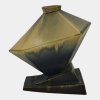
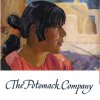
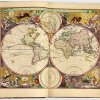
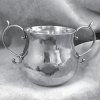
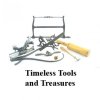

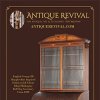

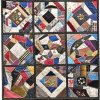






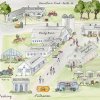

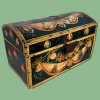





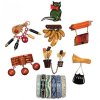






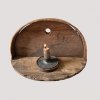


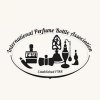
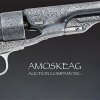






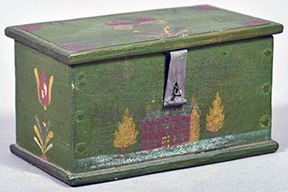
 This David Rittenhouse clock, in a flat-top walnut case with an eight-day movement and brass dial with a bull’s eye, is signed “Dav. Rittenhouse, Norriton.” The signature is flanked by dolphin spandrels, and the dial is decorated in the corners with urns. The 85" high clock is in an old refinish. It has a crack in the base and new feet and is missing the sarcophagus top. It sold to a Maryland collector in the salesroom for $18,880, underbid in the salesroom by a dealer who said he had client for it.
This David Rittenhouse clock, in a flat-top walnut case with an eight-day movement and brass dial with a bull’s eye, is signed “Dav. Rittenhouse, Norriton.” The signature is flanked by dolphin spandrels, and the dial is decorated in the corners with urns. The 85" high clock is in an old refinish. It has a crack in the base and new feet and is missing the sarcophagus top. It sold to a Maryland collector in the salesroom for $18,880, underbid in the salesroom by a dealer who said he had client for it.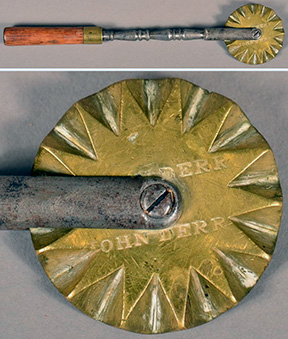
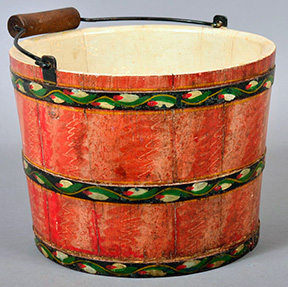
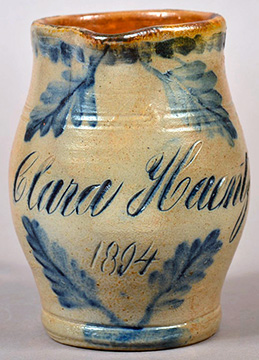 This incised and blue slip-decorated small stoneware pitcher, 5½" high, attributed to Richard C. Remmey, Philadelphia, incised “Clara Haentze 1894,” sold on the phone for $6195. According to the catalog Clara Haentze was born in 1894.
This incised and blue slip-decorated small stoneware pitcher, 5½" high, attributed to Richard C. Remmey, Philadelphia, incised “Clara Haentze 1894,” sold on the phone for $6195. According to the catalog Clara Haentze was born in 1894.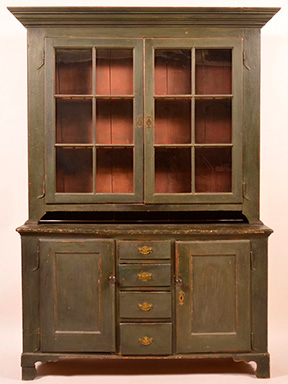 This Lancaster County two-part Dutch cupboard, softwood with dark green paint over red, two glazed doors, rat-tail hinges, open pie shelf, and an unusual useful central row of drawers flanked by two paneled doors, sold for $7965.
This Lancaster County two-part Dutch cupboard, softwood with dark green paint over red, two glazed doors, rat-tail hinges, open pie shelf, and an unusual useful central row of drawers flanked by two paneled doors, sold for $7965.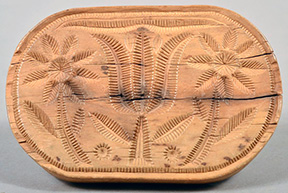 This Pennsylvania carved oval butter print is signed on the back “J.H. 1842.” It has a central tulip flanked by two eight-petal flowers and a turned suppressed ball handle. The 4" x 6¼" x 3¾" print has some age cracks. It sold on the Internet for $5605, underbid on the phone.
This Pennsylvania carved oval butter print is signed on the back “J.H. 1842.” It has a central tulip flanked by two eight-petal flowers and a turned suppressed ball handle. The 4" x 6¼" x 3¾" print has some age cracks. It sold on the Internet for $5605, underbid on the phone.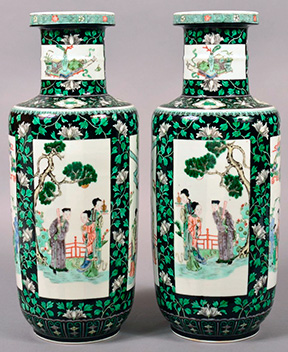 This pair of famille verte Chinese porcelain vases, 17¾" high, with five large panels depicting court ladies, sold to an Asian man in the room for $8260 with competition from a phone bidder and on the Internet.
This pair of famille verte Chinese porcelain vases, 17¾" high, with five large panels depicting court ladies, sold to an Asian man in the room for $8260 with competition from a phone bidder and on the Internet.

